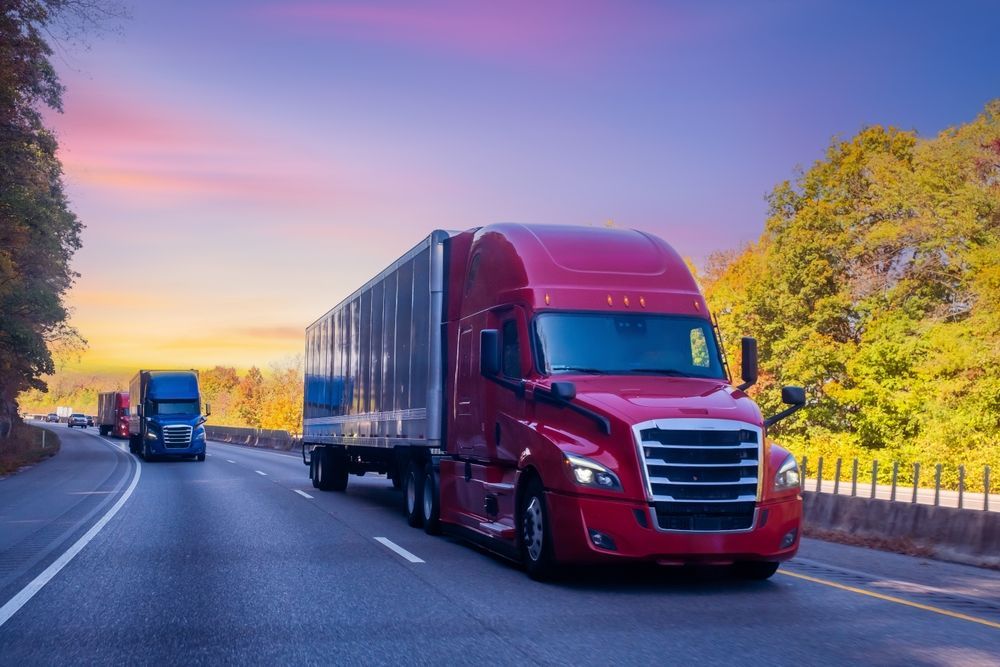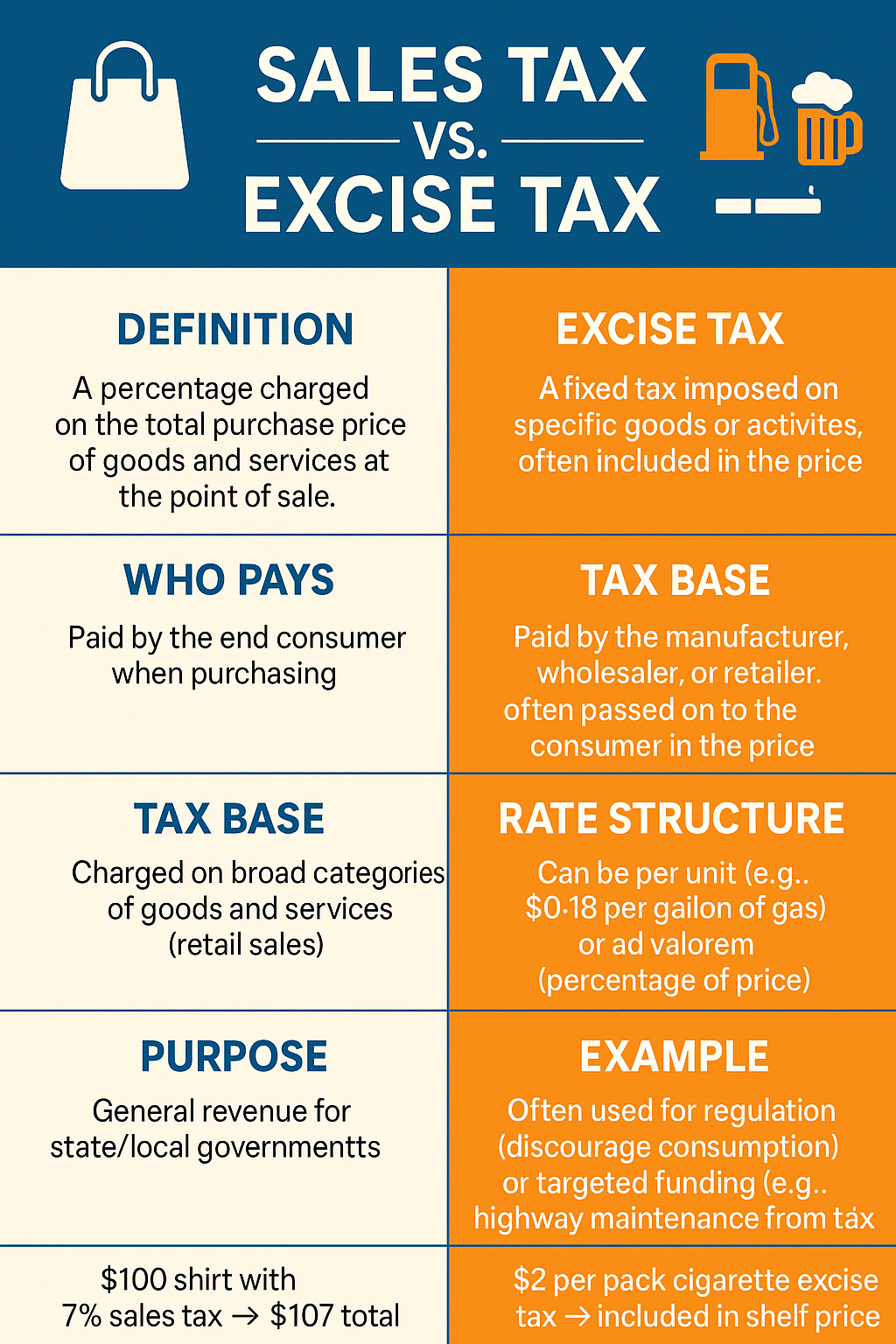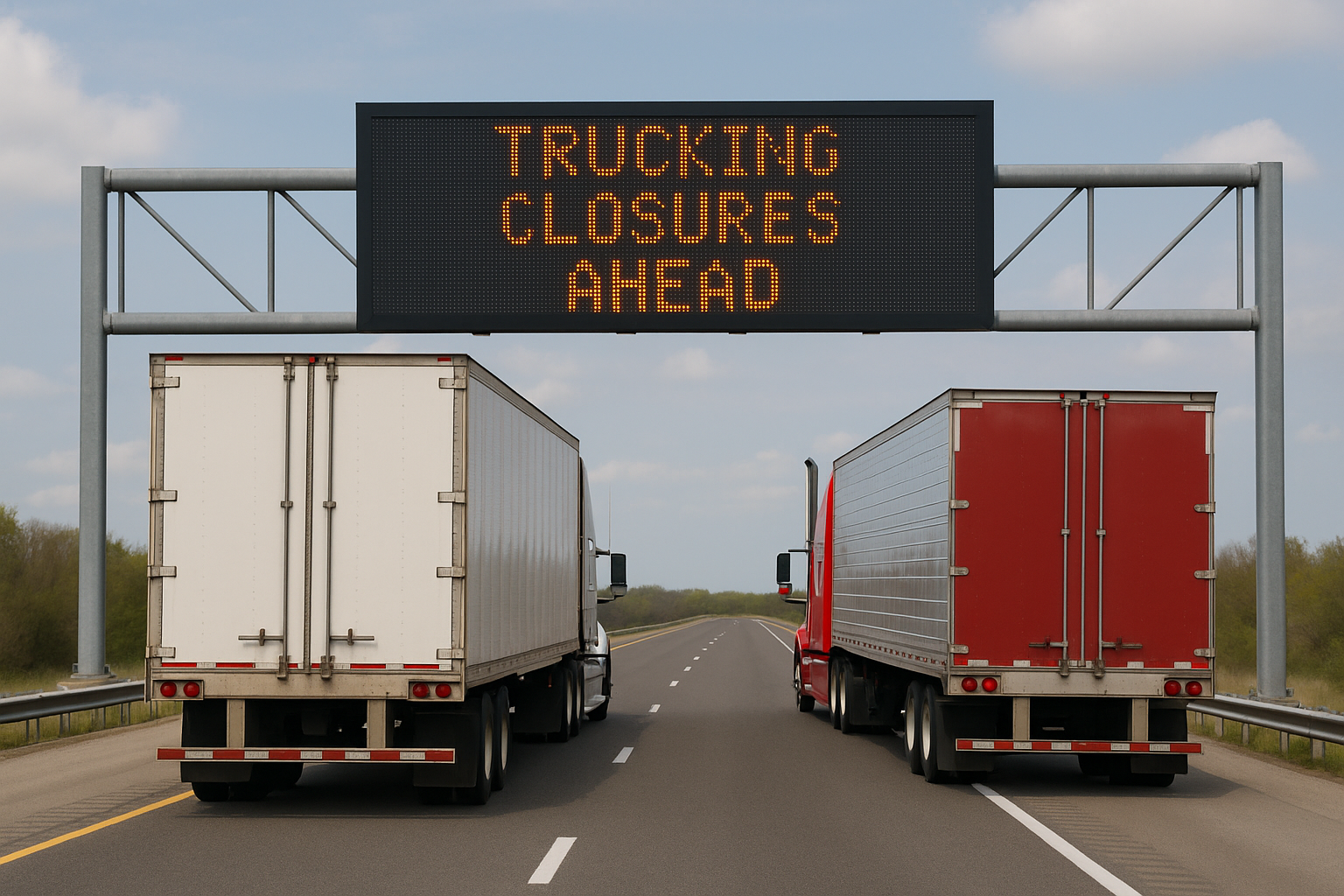By Matthew Bowles
•
August 18, 2025
When a trucking company runs into trouble, “Why not sell?” sounds like the obvious move. In practice, many carriers—large and small—choose an orderly wind-down over a sale. That decision isn’t about stubbornness or pride; it’s about math, risk, timing, and the unique web of contracts, regulations, and liabilities that surround motor carriers. This article unpacks the most common reasons owners close the doors rather than transact, and it offers practical considerations for those trying to evaluate their options. 1) The Hard Math: Thin Margins, Heavy Capex, and Working-Capital Drag Trucking is brutally capital-intensive. Tractors, trailers, telematics, shop tooling, parts inventory, and facility leases consume cash. Meanwhile, revenue is often concentrated in a handful of shippers or brokers who pay on 30–60+ day terms while fuel, tolls, lumper fees, driver pay, and maintenance must be paid weekly. That timing gap creates persistent working-capital pressure. In a sale, buyers focus on sustainable earnings and free cash flow, not gross revenue. If the company has been discounting rates to keep trucks moving, running too many empty miles, or absorbing accessorials, EBITDA can be razor-thin or negative. A buyer will price the deal off normalized earnings; lenders will cap leverage; and any add-backs the seller hopes to claim (one-time repairs, COVID relief, etc.) will be scrutinized. If the enterprise value that emerges can’t clear secured debt, tax leakage, cure costs on contracts, and a risk discount for open claims, a sale becomes uneconomic. Owners then rationally ask: “Why sell my life’s work for zero—or hand over a check to sell?” 2) Insurance and “Nuclear Verdict” Exposure Even carriers with strong safety cultures face tail risk from catastrophic accidents. Claims can take years to resolve and may exceed policy limits. Buyers fear stepping into a minefield of pending or latent claims; sellers fear the size of escrow holdbacks and indemnities buyers will demand to cover that risk. If the expected escrow is so large that the seller’s net proceeds are minimal, the owner may prefer to shut down, keep insurance in runoff, and resolve claims over time without transferring the risk—or the company—to a third party. In some cases, the mere existence of severe claims or a deteriorating loss run can chill buyer interest or kill financing outright. 3) Lender Control, Cross-Collateralization, and Covenant Traps Most trucking balance sheets are weighed down by equipment loans, floor-plan or TRAC leases, and revolving lines tied to receivables. These agreements often: Blanket all assets under a UCC-1, limiting the ability to sell “just the good stuff.” Include cross-default and cross-collateralization provisions—miss a covenant on one facility and you’re in default everywhere. Require lender consent for asset sales, contract assignments, and changes of control. If the sale proceeds won’t fully satisfy secured obligations, lienholders can block the sale, demand a forced auction, or push for a 7/11 (Chapter 7 liquidation or Chapter 11 sale) where they control the process. Faced with that dynamic, an owner may choose an orderly wind-down to avoid a fire sale they don’t control. 4) Contracts That Don’t Travel Freight relationships are personal. Even with formal master service agreements, many shippers and brokers include anti-assignment clauses or require fresh vetting of safety scores, insurance, and EDI/visibility integrations. Some lanes exist only because of a dispatcher’s relationships or a local operations manager’s responsiveness. Buyers discount revenue they aren’t confident will stick. If 40% of your loads depend on the owner’s cell phone and text threads, a buyer will treat that revenue as evaporative at closing—leading to a lower price or earn-out heavy structure. Sellers often reject contingent payouts that require them to “work for the buyer” for years to get paid, and they may conclude a wind-down returns more certain value through piece-meal asset dispositions. 5) Regulatory Overlays: Safety Scores, Audits, and Permits A carrier’s USDOT and MC authority, CSA/SMS safety profile, HOS/ELD compliance, hazmat endorsements, and state permits are highly scrutinized. Recent out-of-service orders, BASIC percentile spikes, or audit findings can scare buyers and insurers. Because reputational and regulatory standing is difficult to transfer, buyers would rather cherry-pick assets and people into their existing authority than buy a corporate shell with history attached. If an “asset-only” structure is the only path—and it yields limited proceeds—sellers sometimes choose to shut down and auction assets on their own timetable. 6) Labor and Workforce Complexity Trucking’s people issues can sink a deal: Driver status : Employee vs. independent contractor classification is under active scrutiny. Misclassification risk (including taxes, benefits, and wage claims) is a classic buyer deterrent. Unions and pension liabilities : Multiemployer pension plan withdrawal liability or unsettled grievances can dwarf deal value. Driver pipeline : If the company relies on a single terminal’s driver community that is already tapped out, buyers may not believe they can maintain headcount post-closing. When buyers price these risks, sellers may decide the haircut is too steep. 7) Equipment Leases and the “Underwater” Problem In a down market, used tractor/trailer values may fall below payoff amounts. If a buyer won’t assume leases at above-market rates, the carrier must either buy out or early-terminate leases—often at a penalty. Multiply that across a fleet and the pre-closing cash requirement can exceed the likely purchase price. Shutting down and returning units under the lease terms (or surrendering them in a negotiated workout) may minimize total cash outlay versus selling the company. 8) Tax Friction: Depreciation Recapture and Basis Mismatches Trucking companies typically use accelerated tax depreciation on rolling stock. In an asset sale, the portion of the purchase price allocated to equipment can trigger depreciation recapture taxed at ordinary income rates for the seller. If there’s also low basis real estate or appreciated land, tax friction increases. When owners realize how little cash they net after federal and state taxes, they sometimes conclude that an orderly liquidation—spreading asset sales over time and managing allocations—delivers a superior after-tax outcome. 9) Environmental Exposures at Shops and Yards Maintenance facilities can carry hidden environmental liabilities: underground storage tanks (USTs), waste oil, parts washers, stormwater compliance, battery/solvent disposal, and paint or body shop residues. Buyers will demand Phase I/II environmental diligence and require the seller to fund remediation or stand behind broad indemnities. If remediation is costly or uncertain, the escrow required can consume the deal. Shutting down and remediating on the seller’s own timeline—often with the help of state programs—can be more predictable. 10) Successor Liability: Why Buyers Fear the Shell Even in an asset deal, plaintiffs may argue “successor liability” where the buyer continues the same business with the same people, equipment, and customers. That fear leads to belt-and-suspenders protections: larger escrows, longer survival periods, tighter indemnities, and reps about safety, wage-hour, and environmental compliance. If the seller can’t tolerate those strings, there may be no deal to make. 11) Timing and Runway A sale takes time: quality of earnings, diligence, lender approvals, definitive documents, consents. If cash burn is acute—fuel cards pulled, insurer demanding a massive renewal premium, lender imposing a lockbox—there may be no runway to complete a sale. A controlled shutdown minimizes chaos: finish the loads, return equipment, collect receivables, pay drivers, and close books without the distraction of a protracted auction. 12) Culture and Identity For many founders, the company’s name is on the doors of the trucks. A sale that requires rebranding or immediate integration into a competitor can feel like erasing a legacy. That emotional reality shouldn’t drive the economics—but it often matters at the margin when the sale payoff is modest. Owners may prefer to close with dignity rather than sell for a nominal sum and watch their brand disappear. 13) When Valuation Doesn’t Clear the Stack The capital stack—secured debt, equipment liens, trade payables, taxes, claim reserves—must be satisfied before equity sees a dollar. In a soft rate environment or a post-accident year, the enterprise value can be below the stack. If management believes a sale only benefits creditors while leaving owners exposed to indemnities, a wind-down directed by the owners (or, if necessary, by a Chapter 7 trustee) can be more rational. 14) Illustrative Patterns (Hypotheticals) Regional reefer carrier with three significant cargo claims in the last 18 months and a pending wrongful death case. The buyer demands a multi-year escrow larger than the proposed purchase price; insurance renewal quotes triple. Owner shuts down, auctions trailers at season’s end, and services claims with remaining cash. Dedicated contract carrier serving a single anchor shipper under an agreement prohibiting assignment. The shipper will rebid the lanes post-sale with no guarantee. Buyer’s valuation collapses. Owner winds down after a 90-day notice period, and drivers migrate to the shipper’s new awardees. Owner-operator fleet using 1099 drivers. A buyer’s counsel raises reclassification exposure and insists on a steep price cut plus indemnity. Owner declines and elects a broker-only pivot, retiring the carrier authority and selling rolling stock over time. 15) What a Shutdown Actually Looks Like An orderly wind-down is not a disappearance overnight. A disciplined plan typically includes: Stop the bleeding : Reduce or pause new loads unless profitable after fuel; tighten credit; conserve cash. Communicate with stakeholders : Insurer, lender, key shippers/brokers, drivers, and landlords—set expectations and negotiate short-term accommodations. Finish safely : Complete committed loads to avoid claims and chargebacks; document deliveries. Return or sell equipment : Coordinate with lessors and lenders; schedule inspections; avoid “abandonment” fees; consider targeted private sales for best price. Collect receivables : Deploy a collections plan; reconcile EDI disputes; offer small discounts for prompt payment rather than account aging into chargeback territory. Address employees : Comply with wage laws and any required notices; pay out final wages timely; preserve records. Insurance tail : Keep appropriate coverage in force for a claims tail; notify carriers of the wind-down; evaluate runoff endorsements. Regulatory shutdown : File required withdrawals or deactivations; close IFTA/IRP accounts; cancel permits thoughtfully to avoid unintended tax bills. Tax and final filings : Handle sales/use tax, fuel tax, payroll tax, property tax on rolling stock, and final income tax returns. Maintain records : Accident, maintenance, driver qualification, HOS logs, and ELD records should be archived to defend future claims. 16) Why a Buyer Can’t “Just Take the Lanes” From a distance it seems easy for a competitor to pay something—anything—to step into the freight. But true value is often in people and process , not paper contracts. If drivers won’t transfer, if the dispatcher who knows the yard foreman at the receiver won’t stay, if the buyer’s cost stack (insurance, shop overhead) is higher, the lanes may not be profitable for the buyer. Buyers discount accordingly, and sellers find the offers underwhelming. 17) Alternatives Between Sale and Shutdown Before pulling the plug, owners can explore middle paths: Targeted asset sales : Sell late-model tractors or specialty trailers to strategic buyers while returning older units to lessors; this can raise cash with less friction. Contract novations : Where allowed, negotiate three-party novations with anchor shippers to transfer dedicated lanes—and collect a modest novation fee. Section 363 sale (Chapter 11) : A court-supervised asset sale can cleanse liens and claims while letting the business operate. It requires funding and tight execution but can unlock value when lenders are cooperative. Assignment for the benefit of creditors (ABC) : In some states, an ABC can be a faster, less expensive path to liquidate assets under fiduciary control. Brokerage carve-out : Shut down the asset-based carrier but keep (or spin off) the brokerage that requires little capex and can scale flexibly. Management earn-out : For some strategic buyers, a short, well-defined earn-out tied to weekly revenue retention may be palatable if escrow terms are reasonable. Insurance renegotiation : If the renewal shock is the trigger, shop for alternatives or adjust deductibles/retentions paired with stronger safety programs. 18) Pre-Sale Hygiene to Improve Marketability If you’re considering a sale—even a slim one—clean up the following to maximize options: Safety file : Tackle BASIC alerts, remediate audit findings, and document corrective action. Claims posture : Reserve appropriately; pursue subrogation; push to resolve minor claims; track loss-run improvements. Equipment ledger : Reconcile VINs, titles, payoffs, and maintenance logs; cure liens or be ready with payoff letters. People : Lock down key dispatcher and terminal manager commitments; clarify driver status and agreements. Contracts : Inventory MSAs, identify anti-assignment clauses, and draft novation templates in advance. Financials : Produce monthly P&Ls by terminal and by lane if possible; separate one-time costs; prepare a credible fuel surcharge and accessorial reconciliation. Taxes and permits : Bring IFTA/IRP/FET current; resolve delinquencies that would derail diligence. Environmental : Order a Phase I if you have shop property; fix obvious issues (spill kits, drum labeling, manifests). Sometimes a bit of hygiene flips the recommendation from “shut down” to “sell assets smartly.” 19) Owner Psychology and Negotiation Leverage When buyers sense distress, offers plummet. Some owners elect to stop negotiating from weakness : they announce a planned wind-down, secure their people, and sell assets at market via multiple channels. Ironically, clarity can draw late interest from buyers who now see a discrete, risk-bounded opportunity (“We’ll take 25 reefers and hire 30 drivers, no corporate liabilities”). The point isn’t to play games; it’s to choose the path that yields the best risk-adjusted net for owners, employees, and creditors. 20) A Quick Checklist: “Should We Sell or Shut Down?” Ask these questions and be candid with the answers: Will a buyer’s enterprise value—after diligence discounts— clear the debt stack and provide net cash worth the time, indemnities, and escrow? Are our top five customers contractually assignable, and what percent of revenue would truly transfer? What are our loss runs and pending claims? Would a reasonable buyer or lender underwrite them? Are we underwater on equipment? What is the cash cost to cure or return units? Do we face classification or pension risks that a buyer will price harshly? Can we operate safely and maintain insurance through a 90–150 day sale process? What is the after-tax net under (a) an asset sale vs. (b) an orderly liquidation? Where is our leverage with lenders, landlords, and counterparties? If we shut down , can we do so without triggering additional claims (abandoned loads, wage claims), and do we have a plan to collect receivables? Which path—sale, hybrid, or shutdown— maximizes certainty while minimizing personally guaranteed exposure? 21) The Bottom Line A trucking company may shut down rather than sell because the sale price can’t overcome debt and risk; because buyers won’t take on the regulatory, insurance, and labor liabilities; because contracts won’t transfer; because closing logistics and taxes erode proceeds; or because the company simply lacks the cash runway to complete a transaction. Far from being an admission of failure, an orderly wind-down can be a disciplined, fiduciary decision that protects drivers, shippers, and creditors while preserving the owner’s sanity and limiting future risk. If you’re at this crossroads, map the numbers honestly, pressure-test your assumptions with trusted advisors, and run both models —sale and shutdown—side by side, including taxes, cure costs, and tail liabilities. The right choice is the one that yields the best risk-adjusted outcome for the stakeholders you care about.





